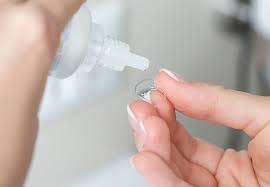
Your child’s optometrist recommended orthokeratology (ortho-k) treatment, which entails wearing corrective lenses overnight. However, having your child wear contact lenses while sleeping may be unsettling. Is it possible that it will cause an eye infection or scratch/squeeze the cornea?
A more in-depth examination of the research on overnight ortho-k lens wear reveals the extent of any actual risk factors and how they compare to other contact lens options.
What Are Ortho-K Overnight Lenses?
Ortho-k contact lenses are custom-made contact lenses worn overnight to gently reshape the cornea, allowing for clear vision the next day. According to research, overnight ortho-k not only effectively eliminates the need for glasses or daytime contact lenses but can also slow myopia’s progression.
Is Ortho-K Putting Your Child at Risk of Eye Infection?
An extensive study at Ohio State University involving 1300 people concluded that overnight ortho-k poses no greater risk than any other type of contact lens modality.
Hygiene is critical in the prevention of infections with all contact lenses. Your eye care professional will provide you and your child with detailed information and guidance on how to clean and store the lenses and what precautions to take during the lens fitting process. Ensure to carefully follow the cleaning schedule instructions and only use the solutions provided for the overnight lenses.
Other Potential Orthokeratology Risks
Is it possible for an ortho-k lens to squeeze or scratch the cornea?
An ortho-k lens floats on top of the tear film that covers the eye. The reshaping is accomplished through hydraulic force applied to the thin central part of the cornea without any tissue being squeezed or crushed.
A corneal abrasion can occur on rare occasions and is usually caused by a fingernail or lens edge scratching the cornea. However, the risk is no greater with overnight lenses than with other rigid lenses.
Is there a higher risk of hypoxia with overnight lenses?
The cornea requires a consistent oxygen supply. This supply is typically reduced when a contact lens is worn. As a result, the cornea can become hypoxic and swell when wearing contact lenses for an extended time. This applies to all contact lens modalities when worn for an extended period.
What exactly is Corneal Staining?
This is the most common type of contact lens complication. The appearance of tissue disruption and other changes on the corneal surface is called corneal staining. This could be due to several factors, including improper lens fit, foreign bodies, tear film disruption, or irregularities at the contact lens’s edges.
A corneal stain can also occur when a contact lens solution directly interacts with the cornea and the patient reacts to the chemicals in the solution. However, according to research, children who wear ortho-k lenses have no higher risk of corneal staining than those who wear soft contact lenses.



